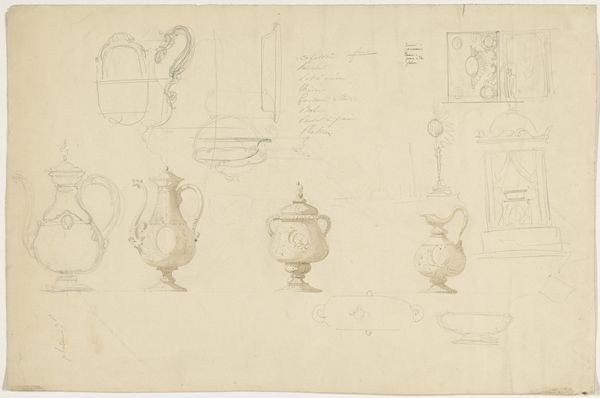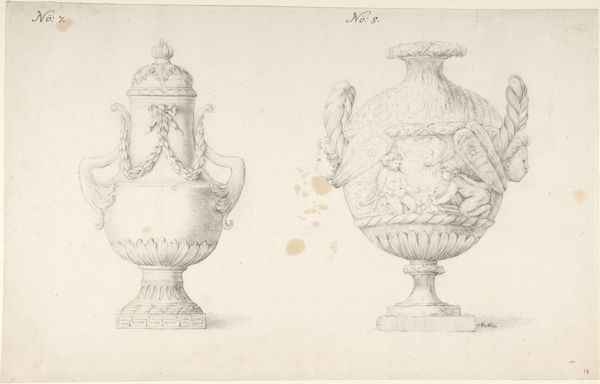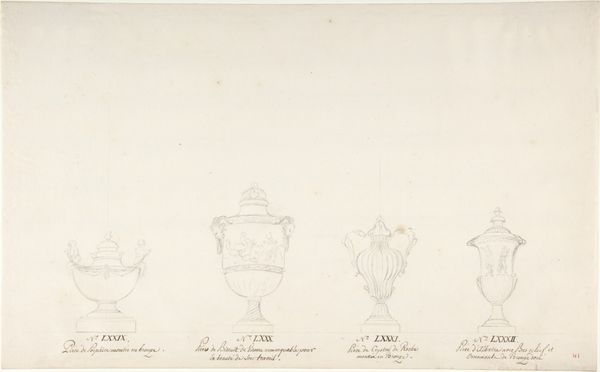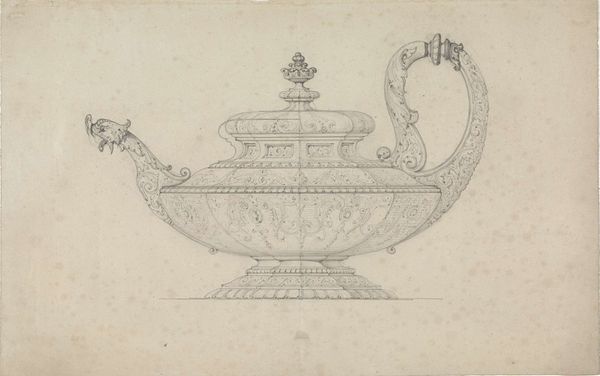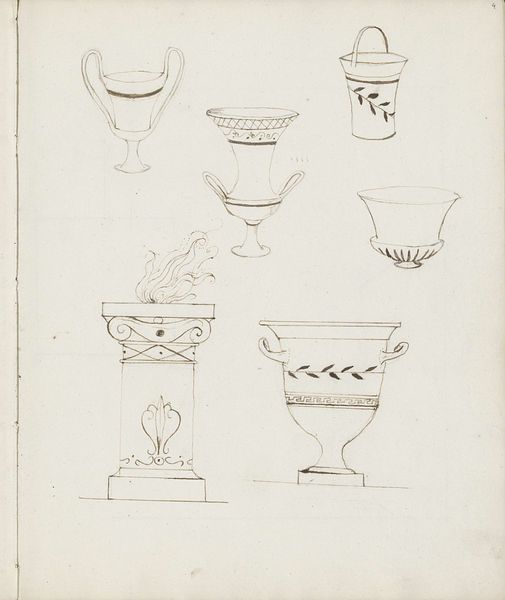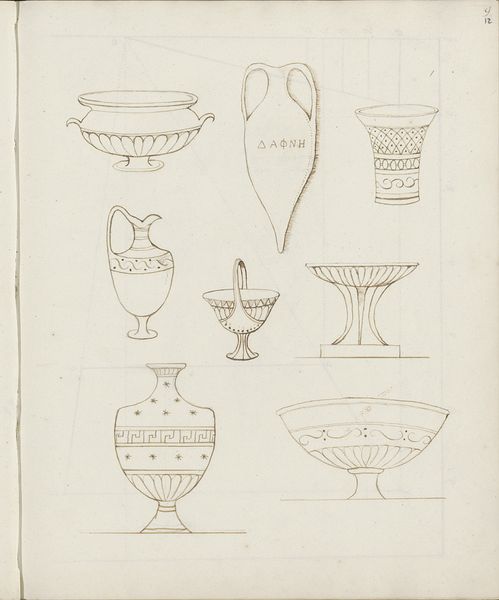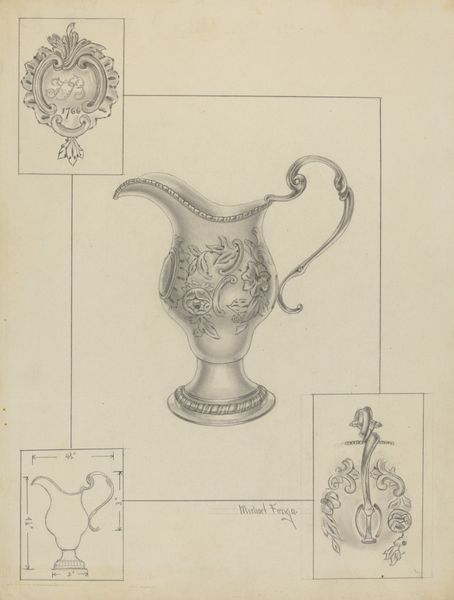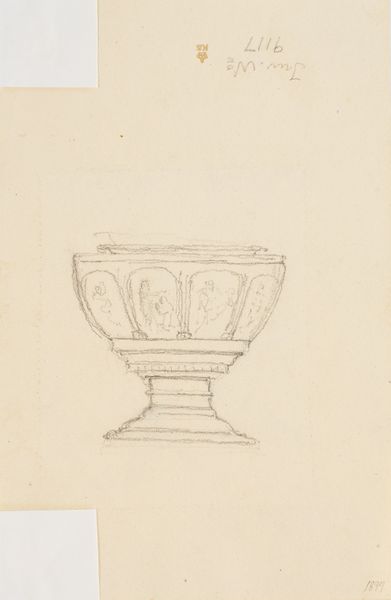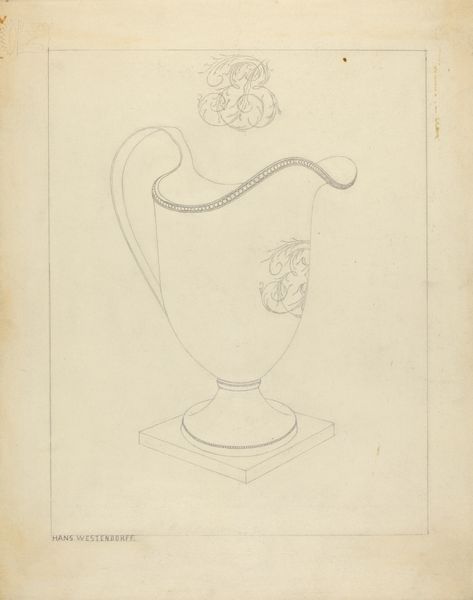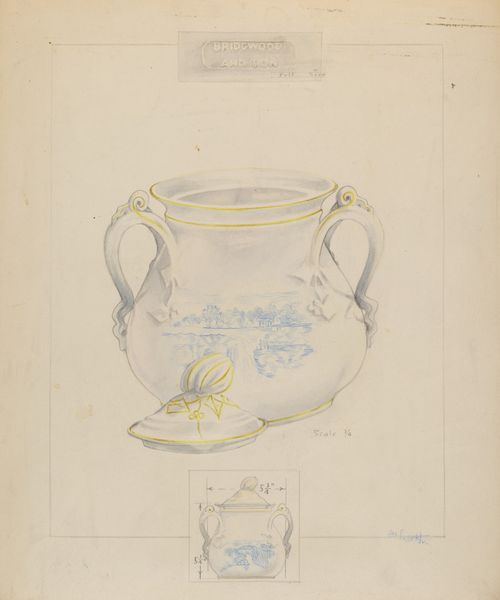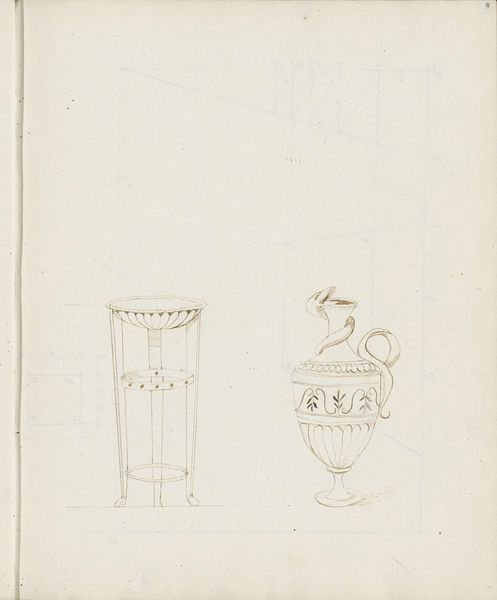
drawing, pencil
pencil drawn
drawing
etching
pencil
academic-art
Dimensions: 210 mm (height) x 182 mm (width) (bladmaal)
Curator: We’re looking at “Skitse til tepotter og vaser,” or “Sketch for Teapots and Vases,” a pencil drawing by Lorenz Frølich, dating from sometime between 1820 and 1908. It's currently held at the SMK, the National Gallery of Denmark. Editor: It has such a tentative, almost ephemeral quality. The delicate lines suggest a fleeting vision, like catching the glint of light on a porcelain surface. Curator: Absolutely. Each teapot and vase bears a slightly different decorative element, carrying visual associations with particular eras of design and class aspiration. It suggests an exercise in cultural vocabulary. Editor: It certainly evokes a sense of craft tradition. I'm immediately curious about Frølich's process—the graphite he chose, the texture of the paper, what these implements were meant for and who would consume from them. You know, the everyday rituals surrounding tea and its presentation, but the precision betrays an intent far away from any factory. Curator: You raise an important point. The medium itself—pencil on paper—implies immediacy, but it is likely a well-considered image with historical design. The sketches don’t exist in isolation; they engage with prevailing notions of domesticity and sophistication. Editor: Though a sketch, these vessels are themselves symbolic objects with laden meanings that are then captured and memorialized by the artist and the materiality of his pencil on paper. So a piece like this then carries even more symbolic weight through each layer of its production. Curator: I completely agree. There’s an act of preservation, fixing these idealized forms for the future and, to that end, making commentary on history and style. Editor: Ultimately, this drawing offers us a window into not only an artist’s creative process, but also the evolution of social value made through the process of labor. Curator: Indeed, it serves as a fascinating study in both visual form and cultural inheritance.
Comments
No comments
Be the first to comment and join the conversation on the ultimate creative platform.
